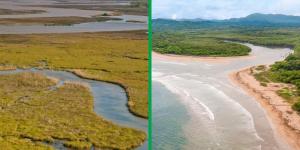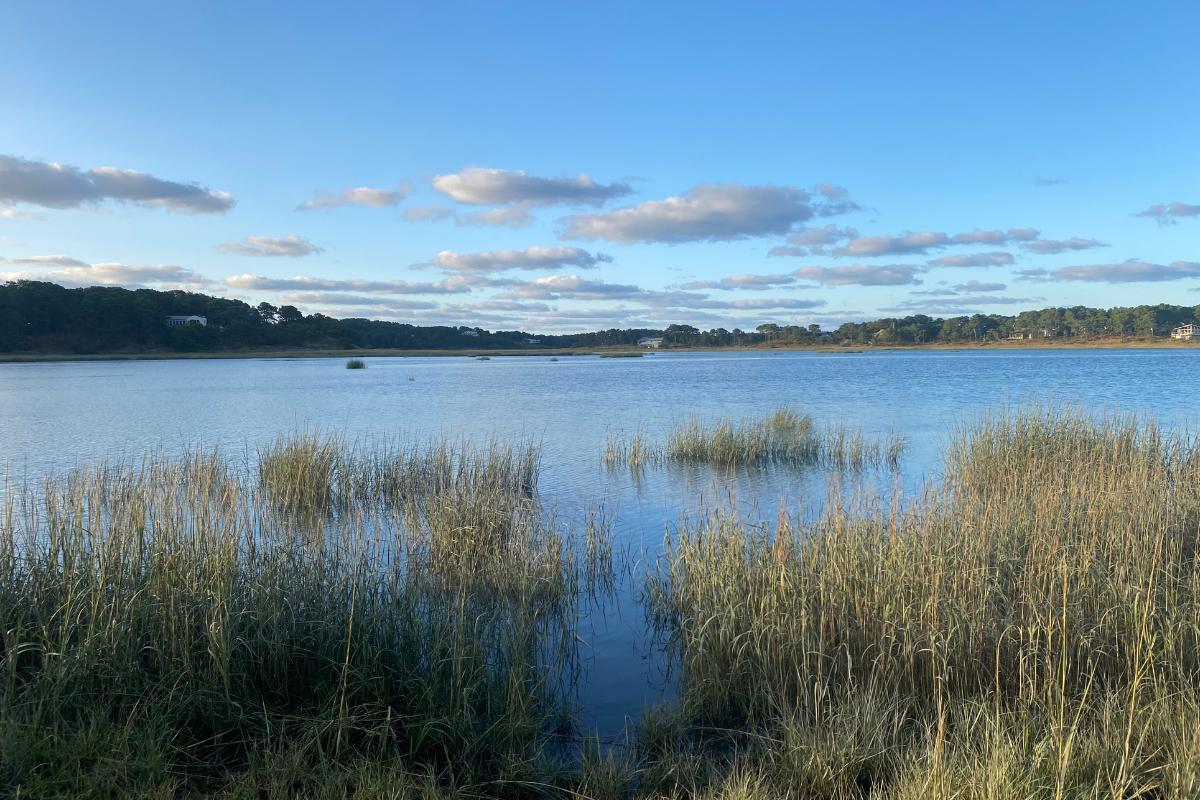Difference Between a Lake and Reservoir


The difference between a reservoir and a lake is to do with artificiality. Both are large bodies of water with similar features, something that can make it easy to confuse them. Generally speaking, a lake is much more diverse. It can have different types of water and nearby geological structures can influence them greatly. Reservoirs are much more specific. They are man-made lakes when provide a water resource for humans. This is often in the form of drinking water, but can be used for many other purposes.
At thedailyECO, we explain more about the difference between a lake and a reservoir. We do so by looking at the definition and characteristics of each, before making a detailed comparison between them.
What is a lake?
A basic definition of a lake is that it is a relatively large standing body of water that is surrounded by land. This inland body of water is usually freshwater, although there are also saltwater or brackish lakes. It is distinct from rivers, streams, ponds and other smaller water bodies by its size, depth and ecological characteristics. We understand what they are by looking at the general characteristics of a lake:
- Size: lakes are typically larger than ponds and smaller than seas or oceans. They vary in size from small, shallow lakes to massive, deep lakes like the Great Lakes in North America.
- Inland: lakes are found on land and are not directly connected to the open sea or ocean. They are usually surrounded by terrestrial environments.
- Standing water: unlike rivers and streams, which are characterized by flowing water, lakes have relatively still or stagnant water. They do not have a continuous flow in a single direction.
- Depths: lakes can range from very shallow to very deep, with some of the deepest lakes reaching hundreds or even over a thousand meters in depth.
- Ecological diversity: lakes often support a wide variety of plant and animal life due to the presence of distinct ecosystems. This biodiversity can vary significantly depending on factors such as nutrient levels, water temperature and geographic location.
- Variability: lakes can experience changes in water level, temperature and oxygen content throughout the year. Seasonal variations and weather conditions can impact the ecology of a lake.
- Water source: lakes can be filled by various water sources, including rivers, streams, rainfall and underground springs. The balance between water inflow and outflow affects a lake's water level.
Due to the above characteristics, lakes are considered types of water resources. This is both because the water can be used elsewhere and the lake water itself can be used in situ for many purposes.
Types of lakes
- Glacial lakes: formed by the melting of glaciers, these lakes often have unique, clear waters due to glacial sediment. Discover more about how glaciers affect bodies of water with our article on what are icebergs?
- Volcanic lakes: created within volcanic calderas, these lakes are often deep and surrounded by striking landscapes. This is a larger result of the process which results from how volcanoes are formed.
- Oligotrophic lakes: characterized by low nutrient levels, they tend to have clear water and support limited plant and algal growth.
- Eutrophic lakes: high in nutrients, these lakes can have excessive plant growth and may suffer from issues like algal blooms.
- Endorheic lakes: these lakes do not have an outlet to the sea, meaning they retain water within their drainage basin.
- Artificial lakes: these are created by damming rivers or streams for various purposes, such as hydroelectric power generation or water supply.
- Saltwater lakes: found in arid regions, these lakes have high salt concentrations, often resulting in salt flats or playas.
Discover more about other bodies of water with our comparison of the differences between a lake and a lagoon.

What is a reservoir?
A reservoir is a man-made structure used to store water. Reservoirs are common around the world and are created by building dams or dams on rivers, streams or valleys. They allow water to accumulate in a specific area. These structures are used for a variety of purposes, such as:
- Drinking water supply: reservoirs store water that can be used to supply drinking water to nearby populations.
- Hydroelectric power generation: many reservoirs are used to generate electricity. The stored water is released in a controlled manner and flows through turbines, generating hydroelectric power. Discover more about this and similar processes with our guide to how electricity is made.
- Agricultural irrigation: reservoirs are used to store water which is then used in irrigation systems for agriculture.
- Flood control: they can regulate the flow of rivers and streams, reducing the risk of flooding in populated areas by doing so.
- Recreation: many reservoirs are also used for recreational activities such as boating, fishing and swimming. This is something natural lakes can also be used for.
- Sediment control: they can help trap sediment that could otherwise negatively affect downstream rivers and bodies of water.
Reservoirs can vary greatly in size, from small local dams to large reservoirs used for large-scale power generation. Building a reservoir involves creating a physical barrier, usually a concrete or earthen dam. This dam retains water and creates an artificial body of water.

Differences between a lake and reservoir
Now we have looked more closely at the definition of lakes and reservoirs individually, we can make a detailed comparison between them. Essentially, the difference between a lake and a reservoir is that a reservoir is a type of lake. Specifically, it is an artificial lake created by humans to exploit it as a water resource. We can learn more about these differences by making the following comparisons:
Origin
- Reservoir: reservoirs are artificial and human-made. They are created by damming rivers or streams.
- Lake: lakes are natural bodies of water formed by geological processes. These include as glacial activity, tectonic movements or volcanic eruptions.
Purpose
- Reservoir: reservoirs are primarily built to store and manage water resources for various purposes, including water supply, irrigation, flood control, and hydropower generation.
- Lake: natural lakes do not have a specific human-made purpose. They serve various ecological and recreational functions, but they do so by exploitation, not design.
Water source
- Reservoir: water sources for reservoirs are often rivers, streams or diverted water bodies.
- Lake: natural lakes are typically fed by local precipitation, springs or underground aquifers.
Water level control
- Reservoir: water levels in reservoirs can be regulated by adjusting dam mechanisms, allowing for flood control and water release as needed.
- Lake: natural lakes have water levels that are determined by natural factors, such as rainfall and evaporation.
Size and depth
- Reservoir: reservoirs can vary widely in size and depth. Their dimensions are often influenced by the specific project's objectives.
- Lake: natural lakes vary in size and depth as well, but their characteristics are influenced by natural geological processes.
Ecological impact
- Reservoir: the creation of reservoirs can have significant ecological impacts, as they may flood existing ecosystems, disrupt natural habitats and affect water quality.
- Lake: natural lakes are part of established ecosystems and have evolved to support local flora and fauna.
Water quality
- Reservoir: water quality in reservoirs can be influenced by factors such as agricultural runoff and sediment accumulation.
- Lake: natural lakes may have more stable water quality conditions due to their natural ecosystem processes. This includes geostructural elements and precipitation.
Ownership and management
- Reservoir: reservoirs are typically owned and managed by governmental or private entities for specific purposes.
- Lake: natural lakes are part of the public domain and may have various local regulations and protections.
Recreation
- Reservoir: some reservoirs offer recreational activities, such as boating, fishing, and swimming, depending on their regulations.
- Lake: natural lakes often provide diverse recreational opportunities and are commonly used for activities like hiking, camping and wildlife observation.
Natural beauty
- Reservoir: the aesthetics of reservoirs may vary, but they can be less aesthetically pleasing due to human-made elements like dams.
- Lake: natural lakes often boast unspoiled, scenic beauty with landscapes formed by natural processes.
Environmental concerns
- Reservoir: reservoirs can be a subject of environmental concerns, including habitat destruction, altered river ecosystems and the displacement of communities.
- Lake: natural lakes may face environmental challenges, but they are typically more resilient due to their natural origin.
Legal status
- Reservoir: reservoirs may be subject to specific legal regulations and ownership rights, depending on their intended purpose.
- Lake: natural lakes may be subject to general water and environmental regulations.
Longevity
- Reservoir: reservoirs have a potentially limited lifespan, as sedimentation can reduce their storage capacity over time.
- Lake: natural lakes can endure for much longer periods, often shaped by geological longevity.
These differences highlight the distinctions between human-made reservoirs and naturally occurring lakes. They do so in terms of origin, purpose, environmental impact and management.
Learn more about comparing bodies of water with our article on the differences between lakes and swamps.
If you want to read similar articles to Difference Between a Lake and Reservoir, we recommend you visit our Facts about nature category.







